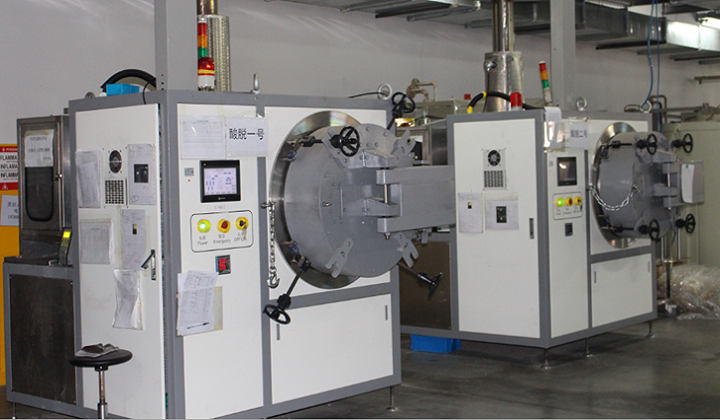Debinding and Sintering Processes
Metal injection molding (MIM) is a typical product of interdisciplinary integration, combining two completely different processing techniques (plastic injection molding and powder metallurgy) into one. It allows designers to break free from traditional constraints and obtain low-cost, complex-shaped stainless steel, nickel, iron, copper, titanium and other metal parts in the way of plastic molding, thus having greater design freedom than many other production techniques.
Production flow diagram of MIM as follows:

In Degreasing Process

A professional degreasing furnace is used to gradually and efficiently remove the main binder from the injection blanks, and the residual skeleton binder maintains the shape of the product so that the degreased parts can be moved to the firing stage.
In this process of using a metal injection mold technology, various methods are utilized to remove the binder materials from the metal parts or injection molded MIM parts, as mentioned earlier.
As the parts are in green color and in their initial stage, the debinding process or easier to perform. Afterward, an interconnected pore network that doesn’t involve any geometry destroys these binder components, resulting in a yellow color outcome of these MIM parts.
While this debinding process removes most of the substantial binder material, some of it still remains in the parts. This remaining binder material holds the metal powders together. However, in the initial phase of sintering (the next step), the residual binder material starts to evaporate from the pores of metal parts.
In contrast, the sintering neck starts growing between the metallic particles in order to consistently maintain the geometrical structure of the parts.
Production Facilities - Comprehensive Degreasing Technology

Solvent degreasing
First step degreasing of hard alloys / oxidizable alloys, special for wax-based feeds
Solvent degreasing oven 13 units (960L, solvent volume)

Catalytic degreasing
Laboratory catalytic degreasing furnace 1 unit (120L, volume)
Nitric acid catalyzed degreasing for mass production 2 units (300L, volume)

Atmospheric degreasing
Vacuum degreasing furnace 1 unit (300L, max. 1,000℃)
Single-plate hydrogen atmosphere continuous degreasing furnace 22 units (14M, max. 1,000℃)
In Sintering Process


In the vacuum furnace or atmosphere furnace of MIM, the skeleton binder is removed, and the metal powder is densified into a complete metal body under the temperature close to the melting point, and then the sintered parts are cooled down to get the nearly finished shape.
Last but not least, in this process, most of the pore volume that the binder material occupied will be eliminated. As a result, the yellow metal injection mold parts will start shrinking at a linear rate of 15%-20% as soon as the sintering process completes.
In the end, the sintered parts are fully prepared to be processed by conventional metalworking methods, similar to the ones used on the cast, wrought, and forged metal parts, to attain a particular final finishing as desired for usage and supply in different types of metal injection molding markets that use the MIM parts.
Production Facilities - Multiple Sintering

Batch Sintering
Batch Vacuum Sintering Furnace - Metal Heat Field 1 unit (240L, max. 1,500°C)
Batch Vacuum Degreasing Sintering Furnace - Graphite Heat Field 4 sections (240L, max. temperature 1,550℃)
Batch Vacuum Degreasing Sintering Furnace 18 units are expected to be added (2021~2025).
Continuous Sintering
Hydrogen Atmosphere Tunnel Furnace with Single Pusher 20 units (6.3m, max. 1,550℃)











